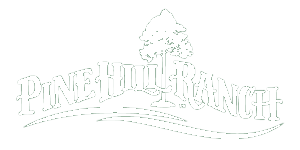Do you still ride your horse to school or to the grocery store?
Most of us now walk, drive, or ride our bikes to get around. Yet, horseback riding is a long way from going out of style. In fact, there are many different styles of horseback riding. Western and English are the most popular and well-known.
A lot of people understand the differences between Western and English riding. It isn’t such a simple split, though. There are even more techniques within each discipline.
We’ve set out to explain the different types of English riding disciplines. These are some of the skills you might learn in your English riding lesson, so keep reading below.
English Horseback Riding Disciplines
Dressage
Dressage is the most classical of the English riding disciplines. The name derives from the French word for “training.” This is fitting because dressage requires a lot of practice!
It’s one of the three main English horseback riding disciplines that the Fédération Equestre Internationale (FEI) recognizes as an Olympic sport.
During a dressage competition, a rider guides their horse through a series of complicated movements. Both must maintain their composure while the horse obeys their rider’s slightest commands. The communication between horse and rider should be nearly seamless. Dressage is a bit like a performing art. Some people think of it as “dancing with horses.”
Competitive dressage involves moving through these series of movements at increasingly difficult levels.
The United States Dressage Federation (USDF) outlines the Pyramid of Training. This pyramid offers guidance for riders to train and develop their horses over time. It moves through stages such as rhythm, suppleness, contact, impulsion, straightness, and collection.
Dressage focuses intently on the connection between the horse and its rider. Dressage training is a great opportunity to foster that relationship.
Hunting & Jumping
There are several different variations of English jumping horseback riding events, but sometimes it can be easier to group them together. Hunting, show jumping, and equitation is closely related. A beginner jumper might be interested in all three during their English riding lesson.
Hunting competitions usually include both jumping and flatwork. The event got its origins from English fox hunting, so the obstacles in a hunting course resemble the natural outdoors. Hunting competitions are judged based mainly on the horse. They should show proper, stylish, smooth riding techniques.
In showjumping, the jumper’s only job is to clear the fences or obstacles. Unlike hunting, show jumping competitions are timed. Judging is based on how quickly a rider can clear their fences with as few mistakes as possible. Like dressage, showjumping is recognized by the FEI as an Olympic sport.
Finally, equitation is somewhere in between hunting and show jumping. In equitation events, judges focus on the rider’s performance, rather than the horse’s. The rider’s position, ability, form, and skill are the most important components as they guide their horse over the obstacles.
Eventing
Referring to eventing as an English horseback riding discipline might be a little inaccurate. Really it’s a combination of three different disciplines: dressage, cross-country, and show jumping.
The United States Eventing Association (USEA) describes eventing as an equestrian triathlon. This event gets its origins from a cavalry test. This test put soldiers through their paces so both horses and riders were prepared for anything they might encounter on the battlefield. It became an official Olympic sport in 1912.
We’ve covered dressage and show jumping already. Let’s dive into the third part of eventing: cross-country.
Cross-country trials test the speed, endurance, and jumping abilities of the horse as they navigate over obstacles and tricky terrain. Courses can include solid fences as well as natural obstacles. Participants must complete the courses within a certain time limit.
Horses and their riders must undergo an immense amount of training before cross-country trials. They require a lot of strength and endurance, so both horse and rider should be at their physical best.
English Pleasure & Saddle Seat
These two English horseback riding disciplines are less well-known than their other competitive counterparts. They are still, however, both recognized by the United States Equestrian Federation.
English pleasure goes all the way back to when riding was still the primary method of transportation. Everyone wanted to prove they had the best and smoothest ride. Trials consist of trotting and cantering, and judges look for animation in the gaits.
In saddle seat, riders sit further back in the saddle, and horses use a high-stepping gait. Judges want to see high energy and animated movements, all performed smoothly. Even though this is an English horseback riding discipline, it’s seen most often in the United States.
What Are the Benefits of an English Riding Lesson?
Whether you’re a beginner jumper or interested in dressage, you can hone your skills in an English riding lesson.
In fact, the benefits of horseback riding go beyond just learning new skills. It’s a great opportunity to reduce stress, improve physical strength, and even make new connections, with both horses and people!
Kids especially have a lot to gain from horseback riding lessons. It’s an environment where children begin to socialize, learn about the value of leadership and teamwork, and build character through taking on more responsibility.
Saddle up for Your English Riding Lesson Today
If you’re ready to experience these English riding lesson options and horseback riding disciplines at The Pine Hill Ranch, it’s time to take the next step.
Head over to our lessons page to figure out which one is right for you.

